Search for articles, topics or more
browse by topics

Search for articles, topics or more

In celebration of its 90 year anniversary, Molteni&C is looking back on some of the products that have shaped its history. Four definitive pieces have been selected from its collection to be Molteni Icons: the D.154.2 and D.151.4 armchairs by Gio Ponti; the Arc table by Foster+Partners; and the Graduate bookshelf by Jean Nouvel.
THE ICON OF VILLA PLANCHART
Like many of Gio Ponti's other pieces, the D.154.2 was conceived for a private client, the collectors Anala and Armando Planchart, as part of the project for their villa in Caracas, Venezuela, which was planned by Ponti to every last detail. Indeed, Villa Planchart (1953-57) is an all-encompassing work of art featuring a global approach to design that characterised the Maestro's influential work. "I dedicated my heart and soul to designing Villa Planchart, and in it, I was at liberty to express my own approach to architecture, both outside and inside," Ponti wrote in Domus.
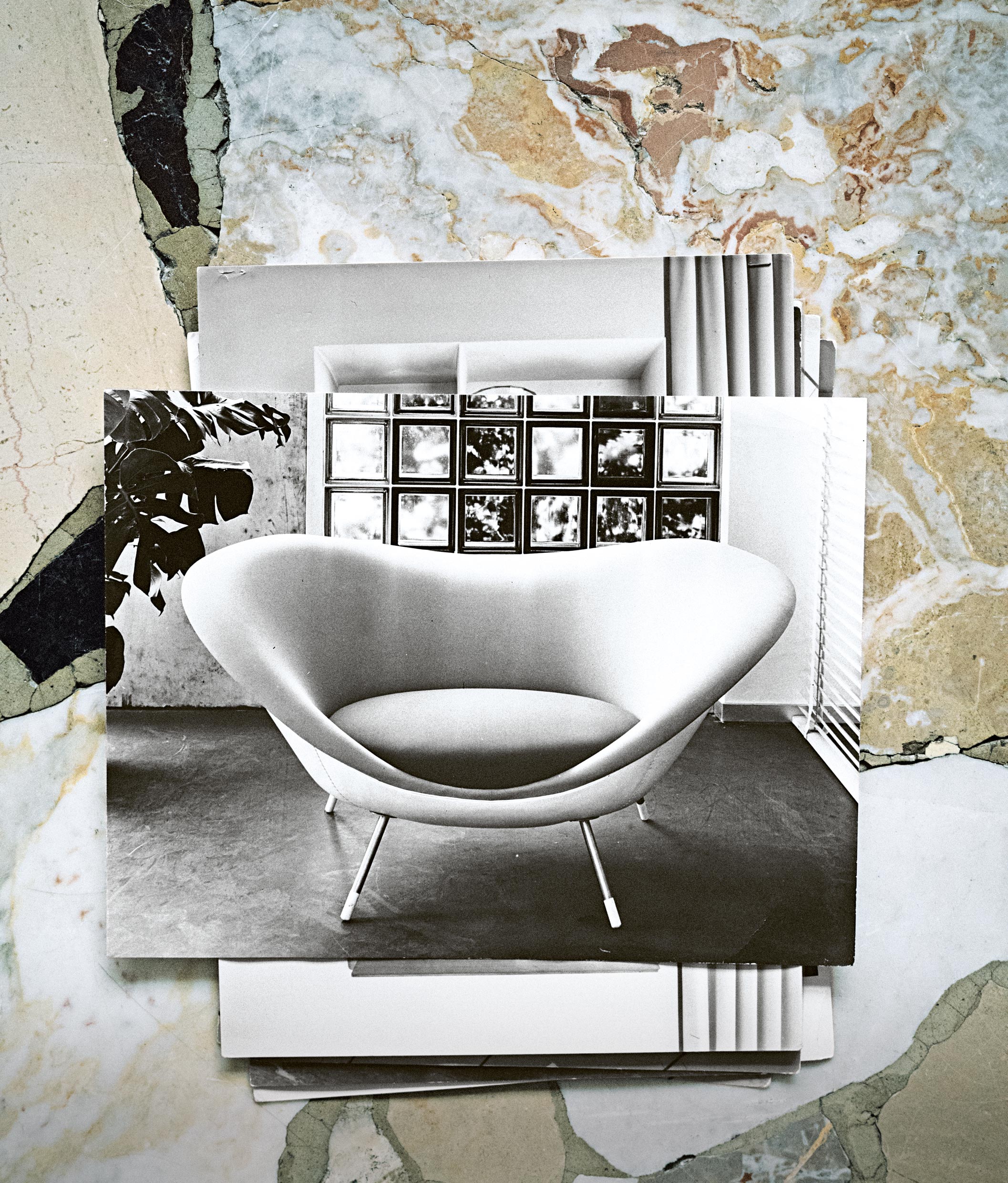 The first production version of the chair, shown at the XI Triennale in Milan in 1957 ph. Oliver Helbig, from Molteni Mondo by Rizzoli NY, 2024. Courtesy of Gio Ponti Archives.
The first production version of the chair, shown at the XI Triennale in Milan in 1957 ph. Oliver Helbig, from Molteni Mondo by Rizzoli NY, 2024. Courtesy of Gio Ponti Archives.
The building, its interiors and its furnishings were inspired by his travels across Latin America, "from seeing some minor yet beautiful work by Oscar Niemeyer, to thinking of Luis Barragán's Casa Pedregal in Mexico City – the latter so uniquely rooted in its natural ecosystem as this building of mine appears detached from it”. The result is an architecture replete with creative and amusing features that are as abundant as the tropical vegetation it embraces: a majestically decorated patio by Melotti, theatrical windows and balconies overlooking the open hall, and bright and colourful ceilings.
As the project came to life, telegrams travelled between Milan and Caracas, and ships traversed the ocean carrying marble, mosaics, gold-decorated plates, lights, sofas and armchairs – including the D.154.2. The chair is defined by its enveloping, curvy profile, with a firm yet cosy polyurethane frame that is juxtaposed with a soft, upholstered counter-frame, also in polyurethane. The armchair is a combinational game, created to be admired from above or afar, but also for everyday home life.
 Villa Planchart in Caracas (1953–1957)
Villa Planchart in Caracas (1953–1957)
In 1957, Ponti repurposed the D.154.2 for the Feal Industrialised House at the 11th Milan Triennale, this time featuring a white frame and counter-frame with a green cushion and sleek chrome-plated legs featuring non-slip plastic feet-ends. Today, the chair has also been reissued by Molteni&C in an outdoor version, with new materials and technical solutions that guarantee its endurance and durability.
 Heritage images of D.154.2 Armchair. From Molteni Mondo, Rizzoli NY 2024. Ph. Oliver Helbig. Courtesy of Gio Ponti Archives.
Heritage images of D.154.2 Armchair. From Molteni Mondo, Rizzoli NY 2024. Ph. Oliver Helbig. Courtesy of Gio Ponti Archives.
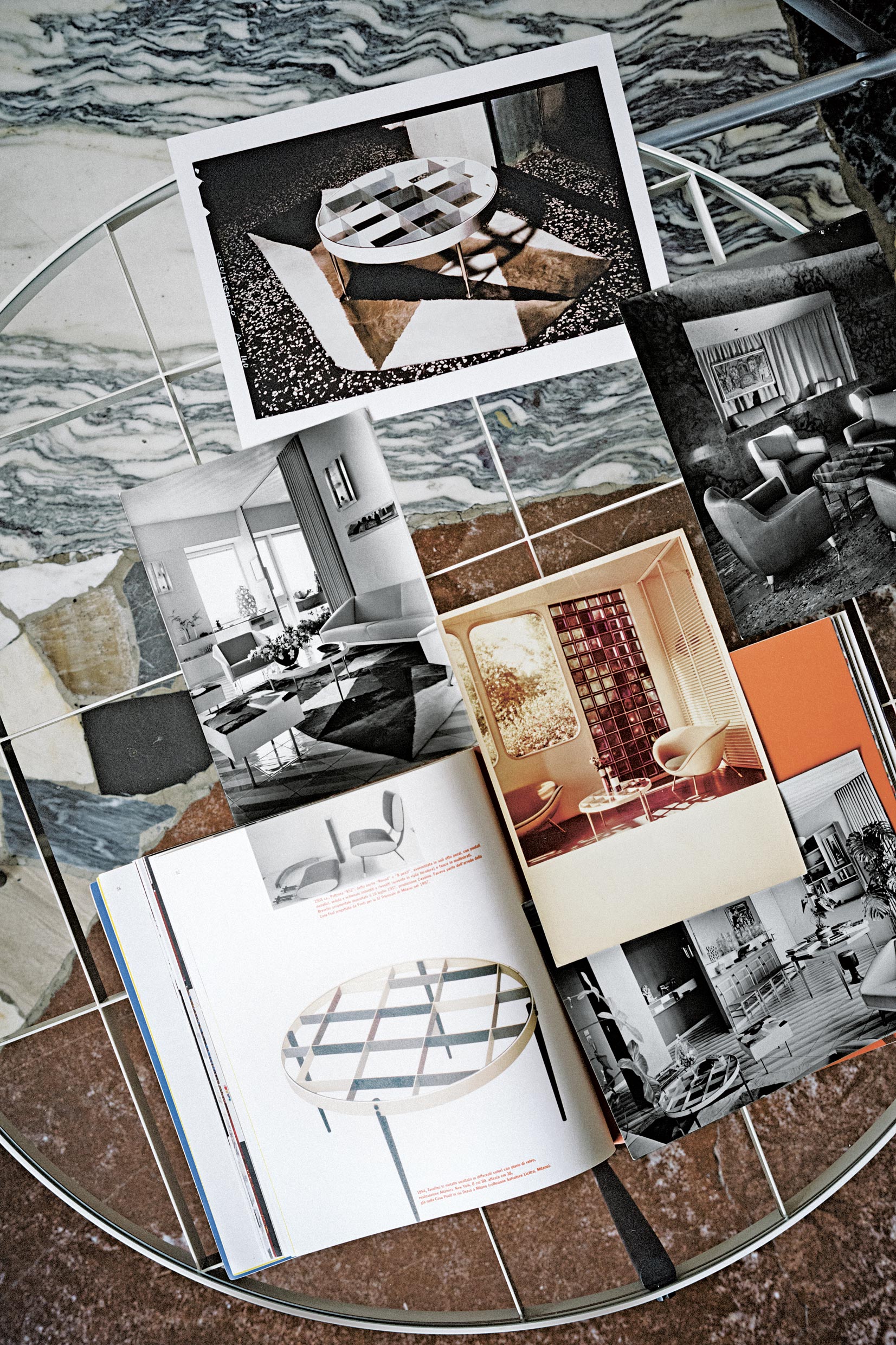 Heritage images of D.154.2 Armchair. From Molteni Mondo, Rizzoli NY 2024. Ph. Oliver Helbig. Courtesy of Gio Ponti Archives.
Heritage images of D.154.2 Armchair. From Molteni Mondo, Rizzoli NY 2024. Ph. Oliver Helbig. Courtesy of Gio Ponti Archives.
In 2016, the D.154.2 was recognized at the Wallpaper* Design Awards, rightfully cementing its status as a Molteni&C icon. In 2024, the armchair received the Compasso d’Oro Career Award for Products, the most esteemed recognition in the Italian design world, celebrating Gio Ponti’s lasting impact on design and innovation.
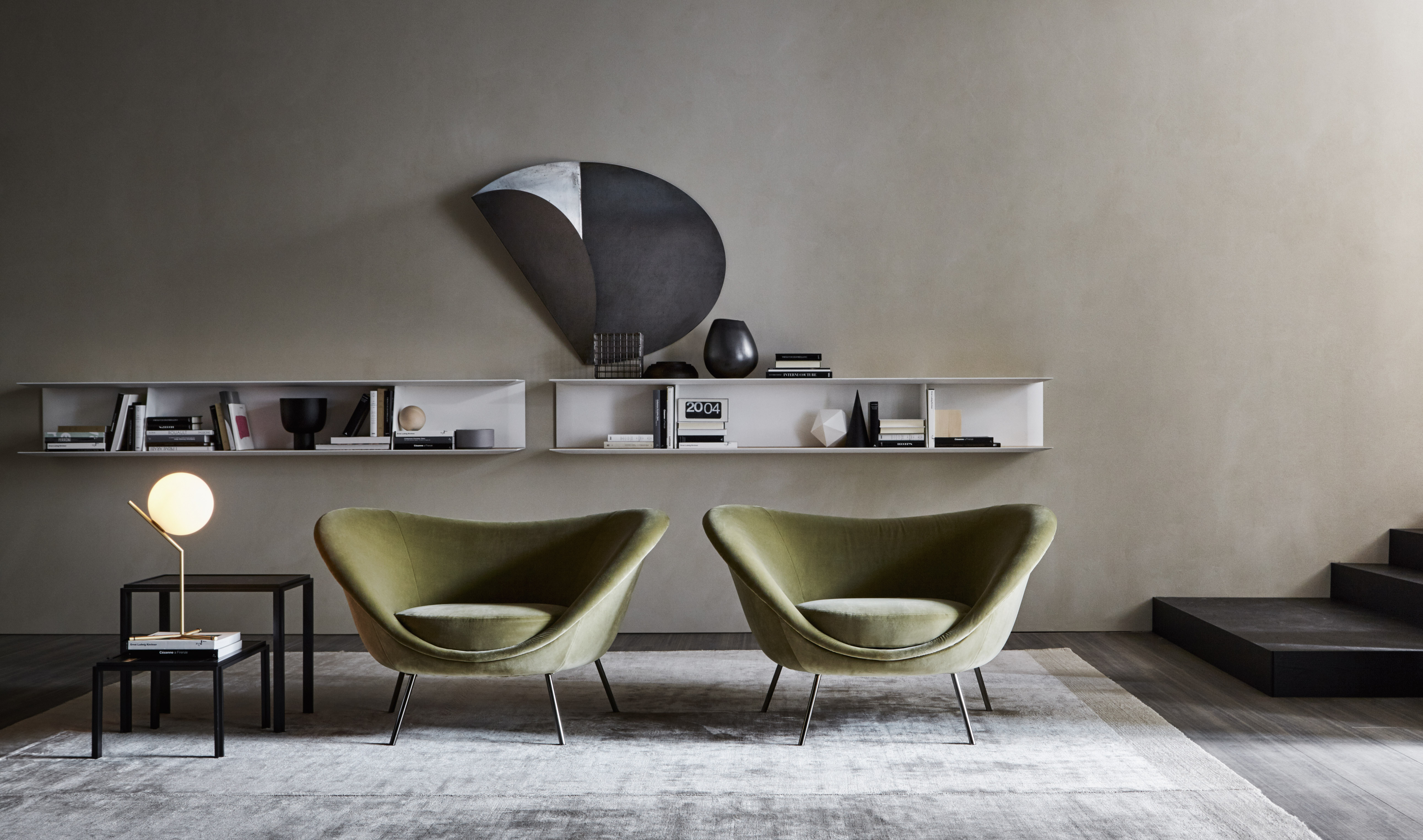
A LIGHT CONCRETE SCULPTURE
A perfect synthesis of solidity and lightness, transparency and volume, the Arc table by Foster+Partners was inspired by London’s Millennium Dome. A large 320m-diameter structure supported by 100m-high steel uprights, the Dome was designed by Sir Richard Rogers to celebrate the new Millennium, and is now officially known as the O2 Arena.
An expression of Cool Britannia, the Dome was a structural masterpiece that was innovative in its use of materials and technologies – an approach it shares with Arc, designed in 2010 by London-based Foster+Partners, one of the world's most inventive architecture studios. Since its foundation in 1967, the studio been promoting its vision of a sustainable approach towards the built environment, as well as offering integrated design solutions.
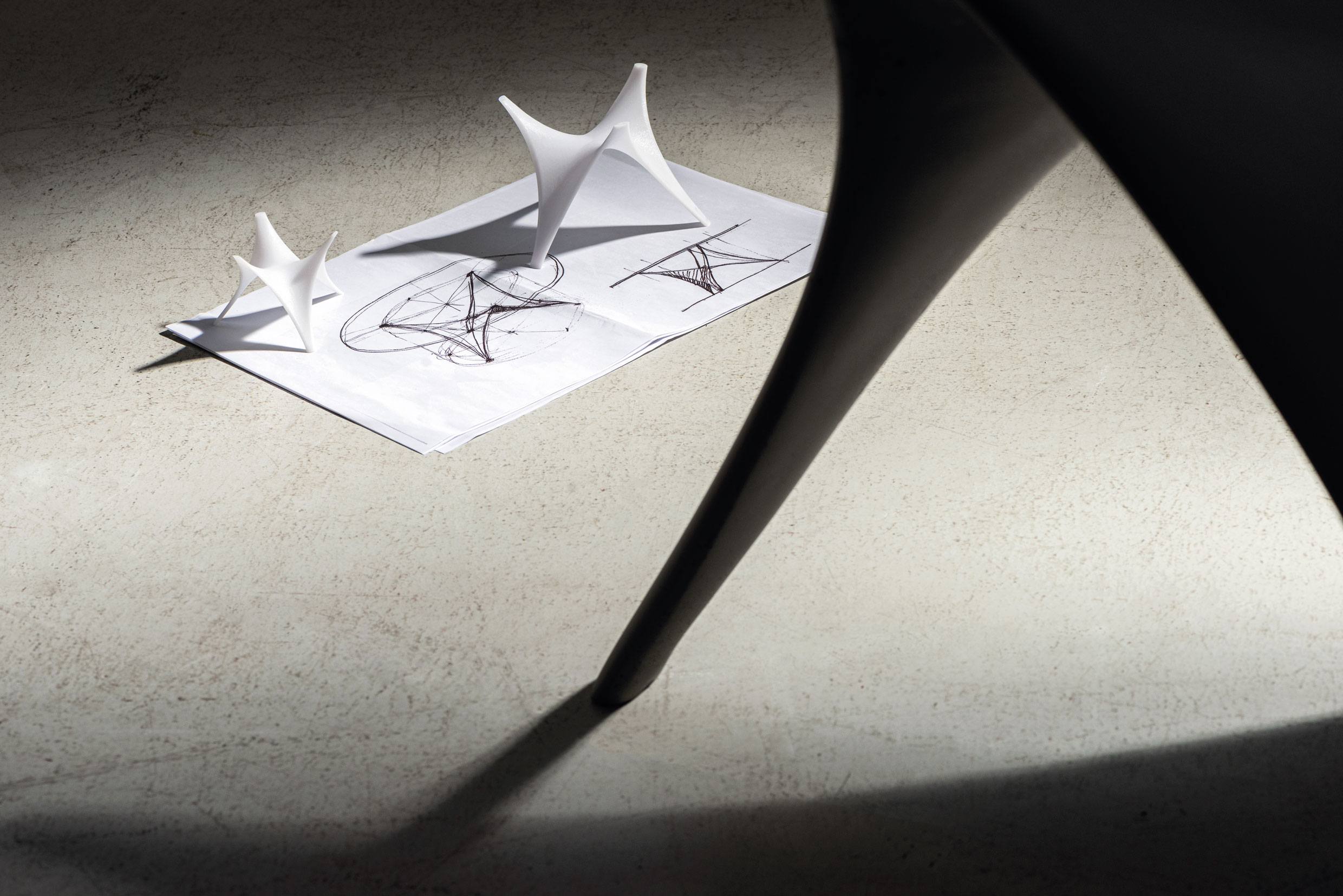
 Mike Holland from Foster + Partners ; sketches and prototypes of Arc Table. From Molteni Mondo, Rizzoli NY 2024. Ph. Jeff Burton
Mike Holland from Foster + Partners ; sketches and prototypes of Arc Table. From Molteni Mondo, Rizzoli NY 2024. Ph. Jeff Burton
Foster+Partners’ collaboration with the Molteni Group and its R&D departments has resulted in numerous time-defying designs and furnishings, not least Arc, the base of which is made of Ductal, a light concrete made using cement and organic fibres.
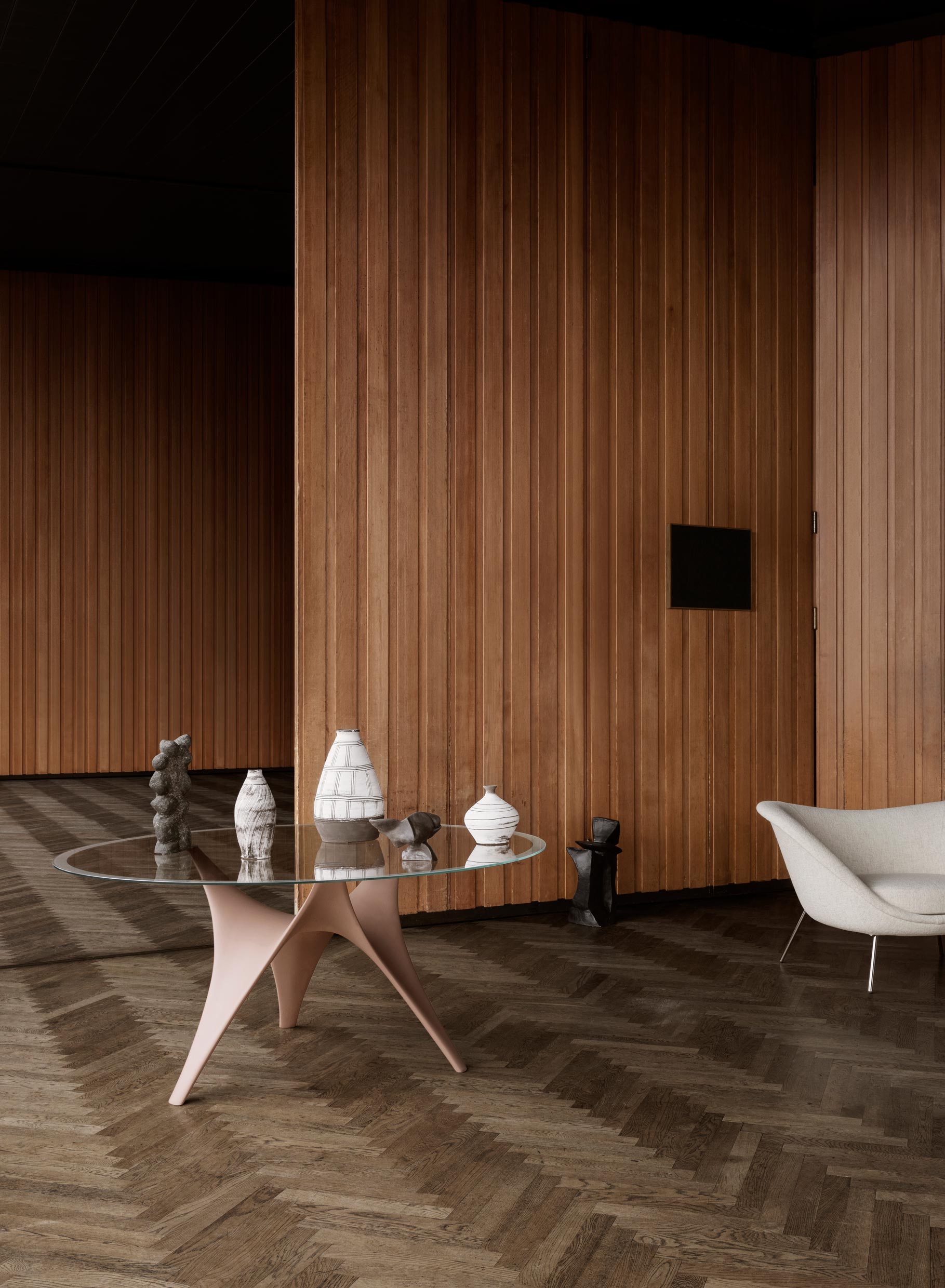

This material is eight-times sturdier and ten-times stronger than conventional concrete. The table base – which is moulded in a single block and available in white, grey, bronze, black, and brick colours – resembles a tensile structure in its sculptural forms. The round, oval top is made of tempered glass that is bevelled at the edges. Nine finishes are available, which include extra lightweight glass or marble tabletops, making Arc suitable for both indoor and outdoor use.

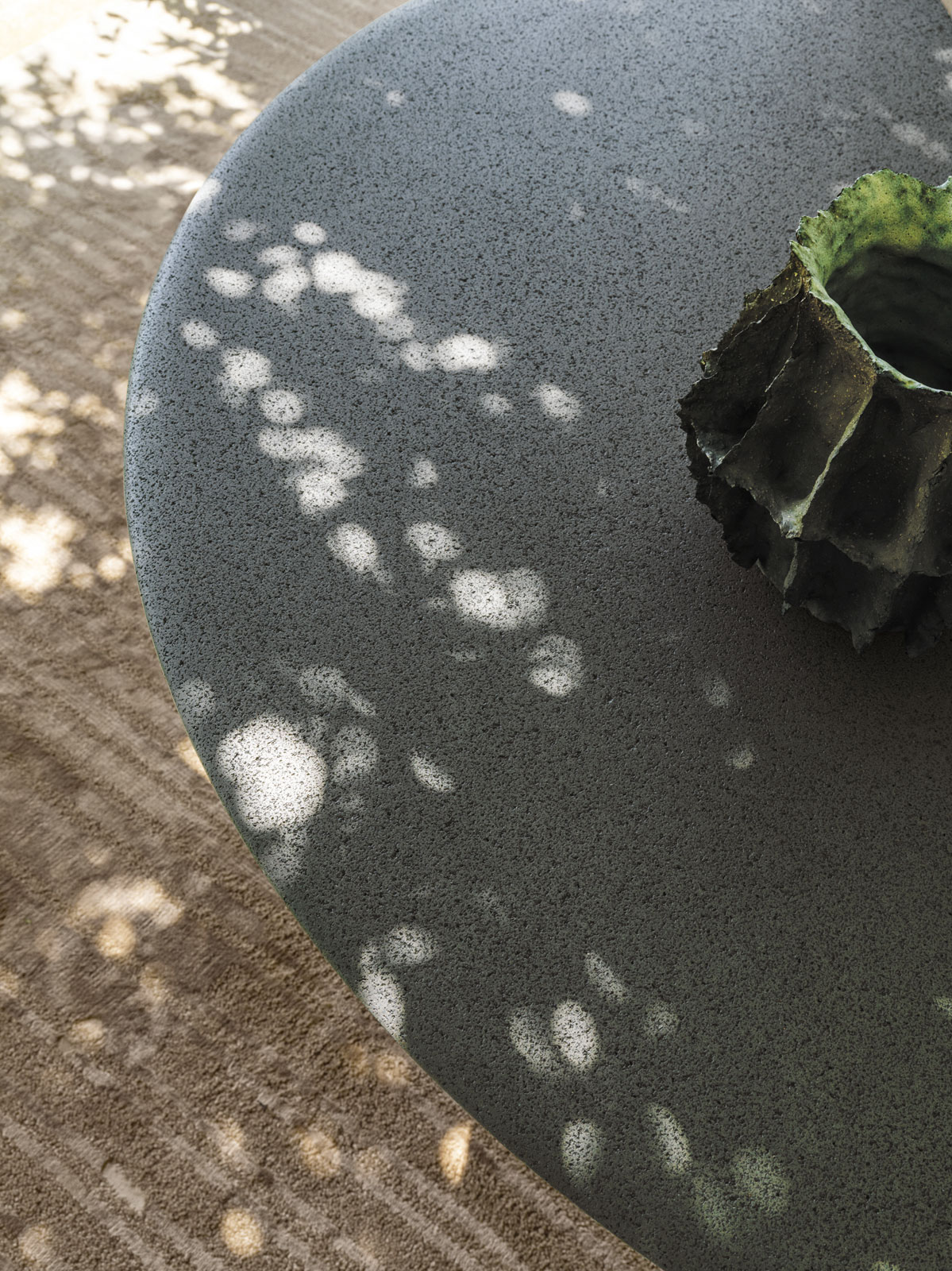
“We believe that the quality of our surroundings has a direct influence on the quality of our lives”
Foster + Partners explains.
Therefore, each design from the studio challenges conventional forms while maintaining functionality and attention to detail. The Arc table combines structural strength and elasticity with innovative concepts such as total recyclability and a low environmental impact during the production cycle. Thus, it is a design that is still relevant today, despite the fact that it was created almost 15 years ago.
In 2011, the Elle Decor Design Award was given to the Arc table.
A TRAVELING EXPRESSION OF ITALY
“An Italian ship is like a piece of Italy, it must represent the superior and most prestigious aspects of Italian taste, culture, arts, and craftsmanship,” Gio Ponti wrote in a 1950 article for Corriere della Sera. “Foreigners must learn about Italy on our ships.”
It reads almost as a manifesto of the idea of Italianness, which guided his belief in Italian leadership in art and craftsmanship.
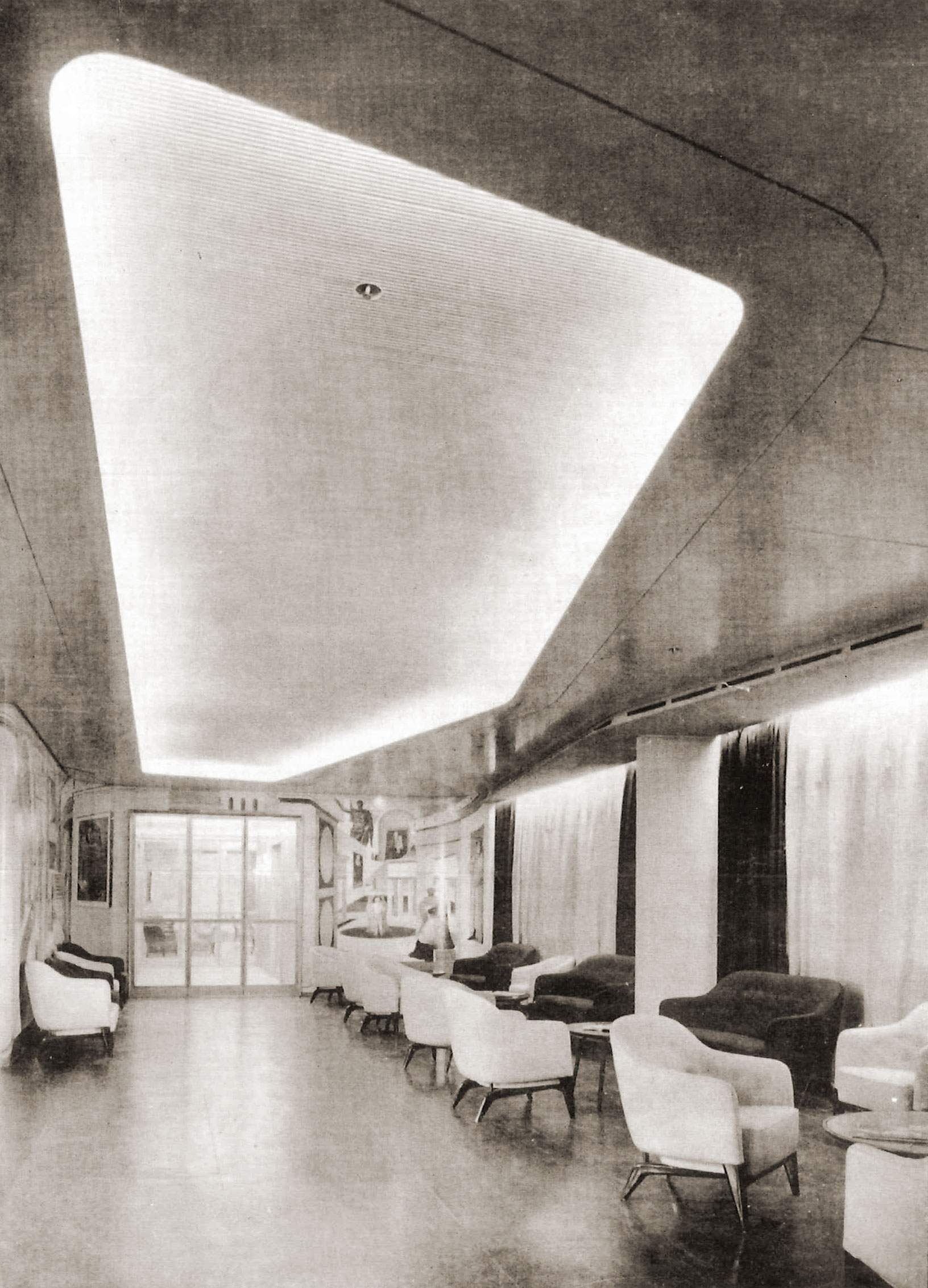 Poltroncina D.151.4, Heritage Collection Molteni&C. Interno della M/N Andrea Doria, design Gio Ponti. Courtesy Gio Ponti Archives, CSAC Parma
Poltroncina D.151.4, Heritage Collection Molteni&C. Interno della M/N Andrea Doria, design Gio Ponti. Courtesy Gio Ponti Archives, CSAC Parma
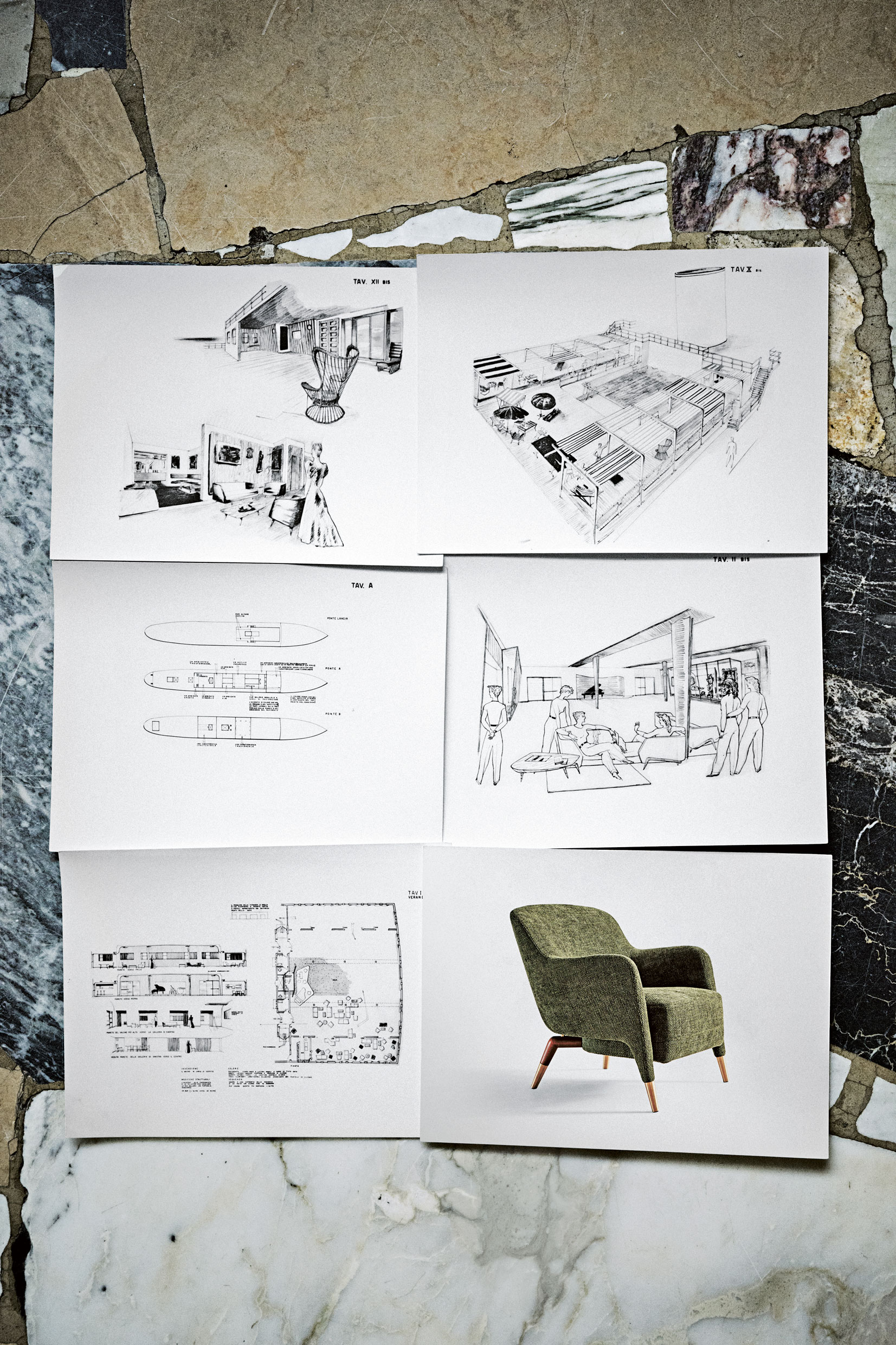 Drawings for Conte Biancamano ocean liner. From Molteni Mondo, Rizzoli NY 2024. Ph. Oliver Helbig. Courtesy of Gio Ponti Archives. D.151.4 on M/N Andrea Doria, design Gio Ponti. Courtesy Gio Ponti Archives, CSAC Parma
Drawings for Conte Biancamano ocean liner. From Molteni Mondo, Rizzoli NY 2024. Ph. Oliver Helbig. Courtesy of Gio Ponti Archives. D.151.4 on M/N Andrea Doria, design Gio Ponti. Courtesy Gio Ponti Archives, CSAC Parma
Between 1949 and 1951 Ponti designed the fittings of four ocean liners and two cruise (Giulio Cesare, Andrea Doria, Conte Biancamano, Conte Grande, Africa, and Oceania), conceiving of them as floating houses. These ships became small cities on the move with public gathering areas – such as dining and dance halls – for which Ponti requested the collaboration of his friends – from artists Lucio Fontana, Salvatore Fiume, Achille Funi, and Massimo Campigli, to craftsmen such as Piero Fornasetti, Nino Ruju, and Guido Gambone – in order to demonstrate the vibrancy of Italian culture with their work. Just as with his approach to house interiors, Ponti unleashed decorative fun onto the ships’ interiors.
“Ships laden with art, a traveling annunciation of Italy”
he wrote.
A fervent admirer of Gustavo Pulitzer Finali and his legendary 1931 Victoria motorship, Ponti had always been passionate about ship furnishings and he designed every detail of a vessel’s interiors. With a few variations, he also reproduced an armchair for these ships that was reissued in 2017 as D.151.4.
The D.151.4 is a perfect piece for floating homes and contemporary spaces alike, featuring a wraparound structure in solid canaletto walnut with comfortable armrests. Its solid wood seat is paired with elastic straps and a polyurethane cushion that is cut at different densities, before being covered in textile and leather upholstery from the Molteni&C collection and supported by solid wood feet with tapered brass tips. It is a direct demonstration of the Italian creative spirit promoted by the Milanese master around the world, and the D.151.4 immediately became a best seller. As such, in the editorial which launched the first issue of the magazine Domus: La casa all'italiana in 1928, Ponti uses the recurring aphorism: “It’s enough just to be Italian.”

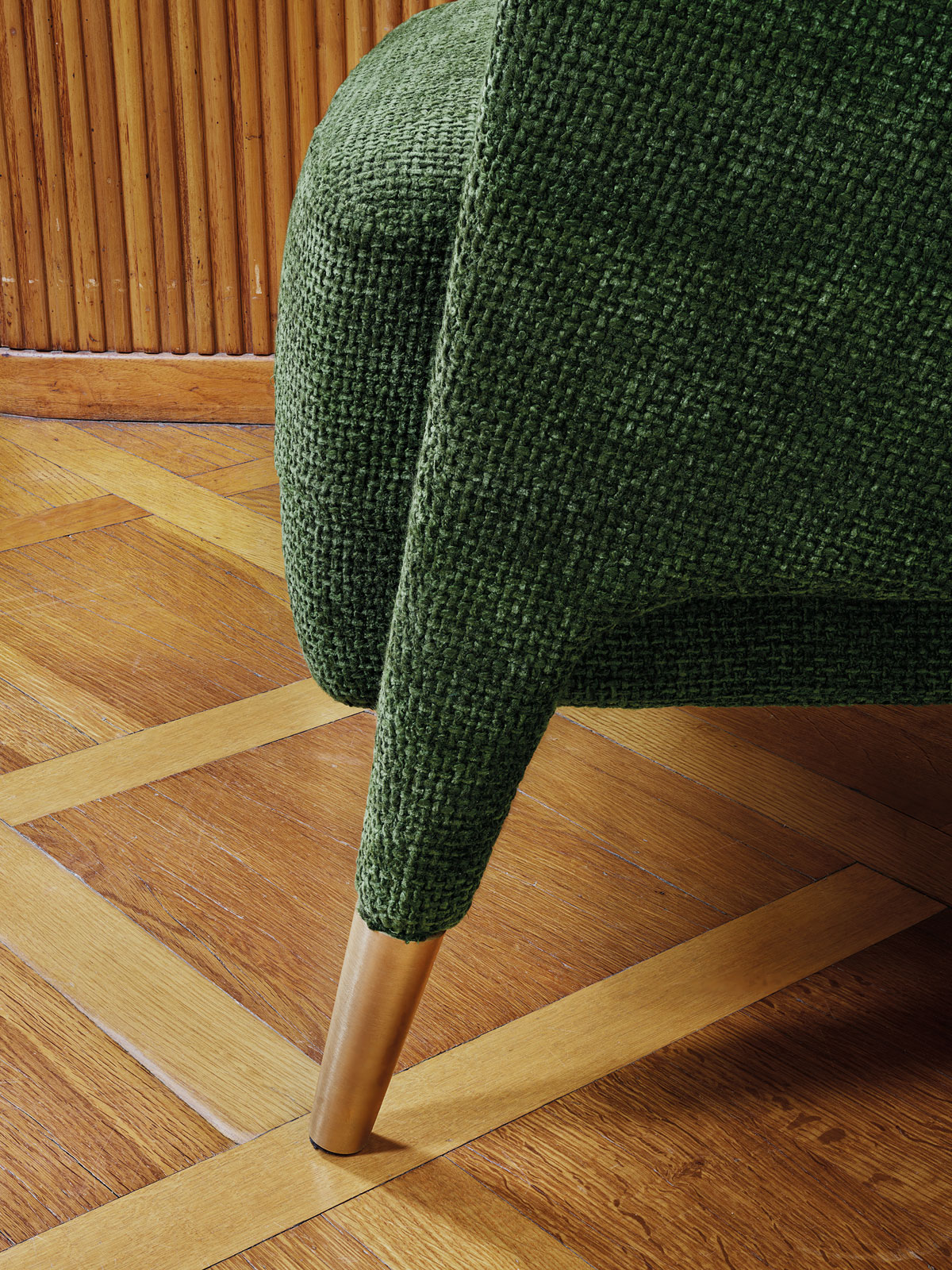
A MINIATURE ARCHITECTURE
Suspended and modular, understated and light: the Graduate bookcase is the work of a great master. Drawing inspiration from his experience as an architect, in particular from the way in which reinforced concrete bridge slabs are built, Jean Nouvel, born in Fumel in 1945, designed the piece in 2003.
“I think that design, and more specifically furniture, should be considered as true miniature architecture intended for interiors,” says the French architect. “An architect who does design”, as Nouvel defines himself, can only design elementary and simple objects, small architectures by all means, but “not small in a quantitative or detracting sense, but rather in an affective one.” Such is Graduate, a virtuoso hanging bookcase featuring a single shelf anchored to the wall or ceiling.

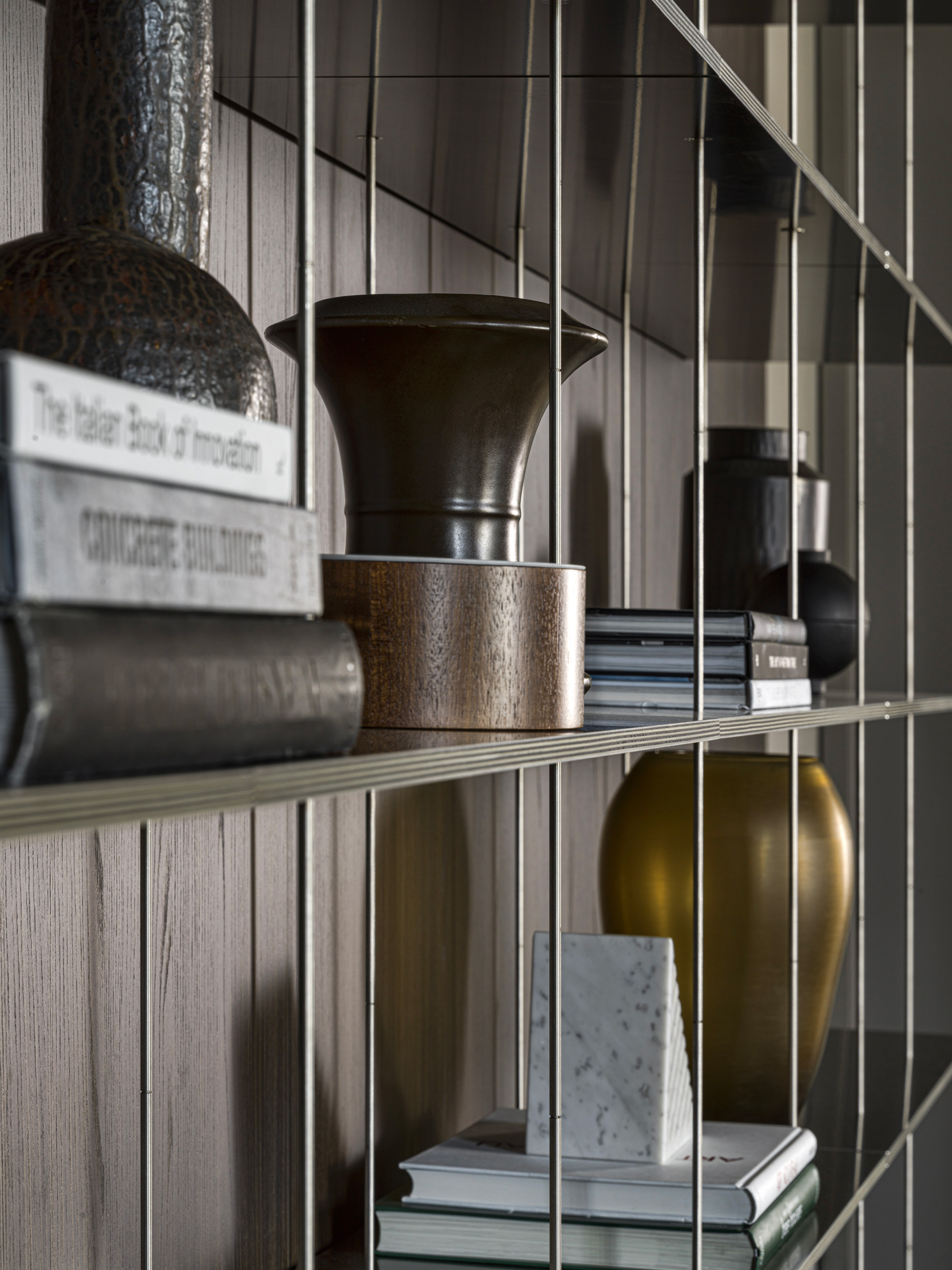

Slender steel tie rods support Graduate’s adjustable shelves that are made of wood and aluminium, and which appear to float in the air thanks to invisible mechanisms. Its secret is enclosed in the thick top shelf, which allows the weight of the structure to be distributed evenly along the entire surface of the bookcase, with a capacity of 125kg. The shelves are also technologically advanced: the core is made of plywood, whilst the outer coating is made of natural or black anodised aluminium.
“Architecture has been fascinated by machines and its aesthetics have expressed this up to high-tech,” says Nouvel. “But if you look at the current evolution of techniques, what strikes me is the extent to which we are moving towards absolute control of matter. I call it miracle aesthetics.”
The result of a long and intense collaboration with Molteni Group, Graduate carries forward a tradition of furniture created for specific needs and special projects that then become catalogue products, such as the Less table, designed by Nouvel for the Fondation Cartier in Paris when it opened in 1995.
In a career spanning nearly 50 years, Nouvel has received numerous awards and accolades, including being selected for the ADI Design Index in 2004, the Design Award of The Federal Republic of Germany (Design Preis) in 2006, and the highly coveted Pritzker Prize in 2008.
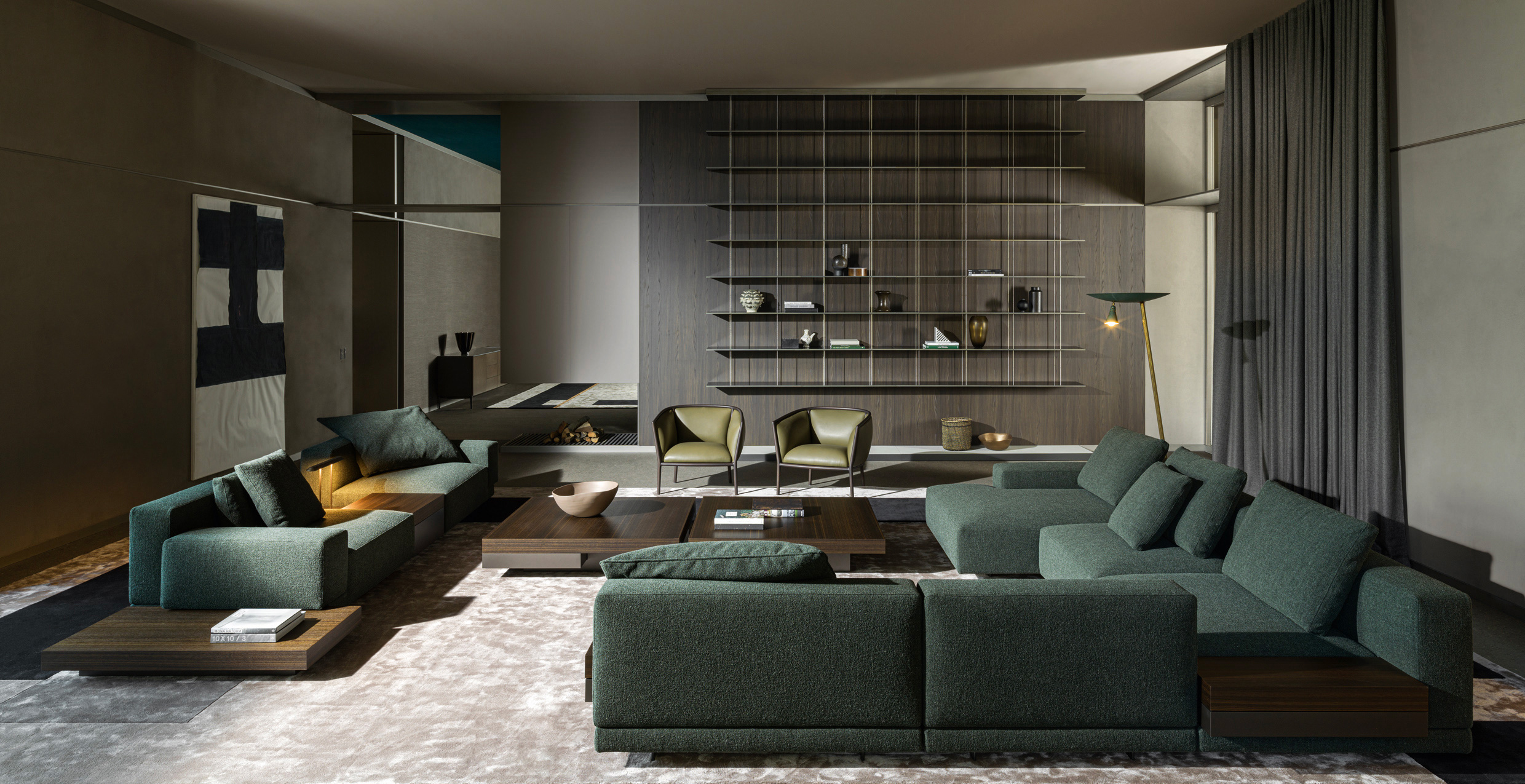
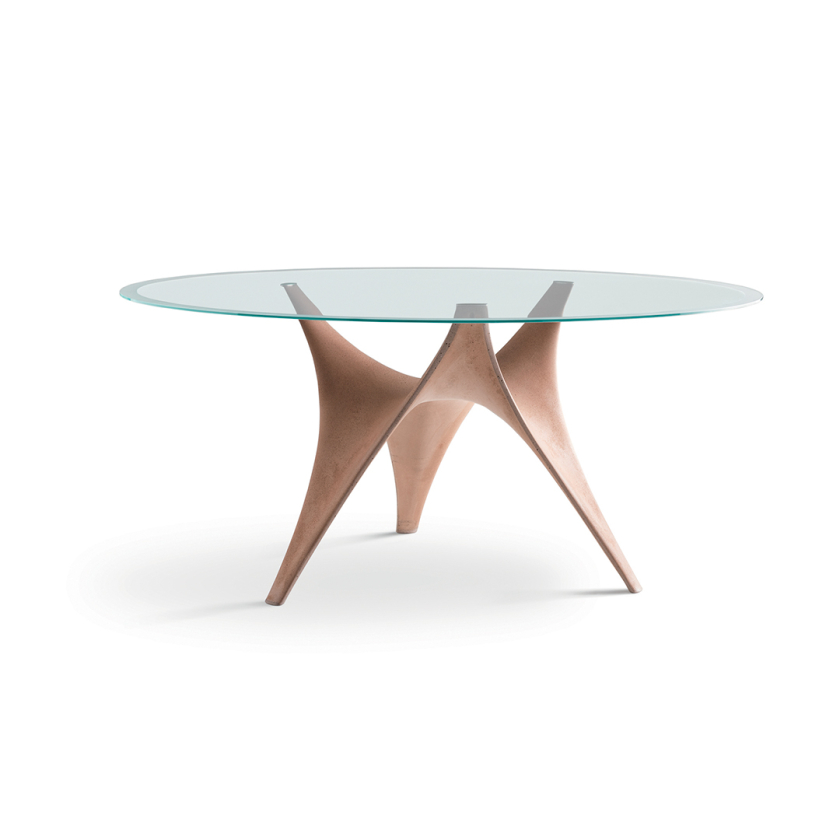


Discover the history of Villa Planchart in Caracas, Venezuela, as we celebrate the Compasso d’Oro Career Award for Products for Gio Ponti’s D.154.2 armchair.
“Ponti style” is a lifestyle that emerged through six decades of the creative practice of Gio Ponti (1891-1979).
Designers as Gio Ponti have long been attracted to the creative and intellectual freedom offered by maritime projects, and that continues to ring true today.
Thanks for your registration.